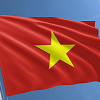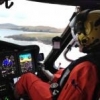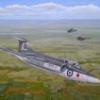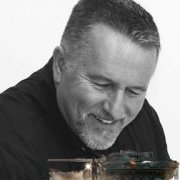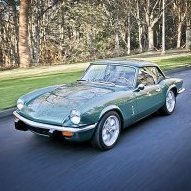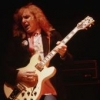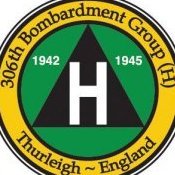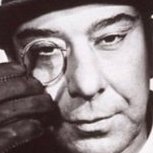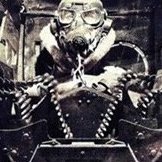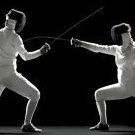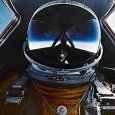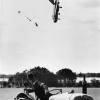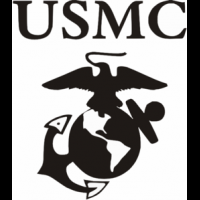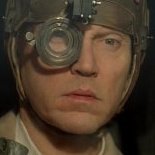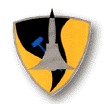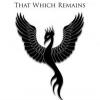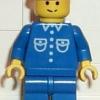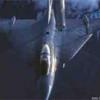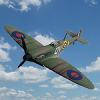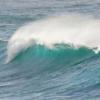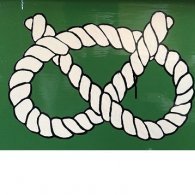Leaderboard
Popular Content
Showing content with the highest reputation on 16/04/20 in all areas
-
34 points
-
31 points
-
Hard to believe there isn't a newer 1/72 tooling of the S-3 than the 70s Hasegawa kit. It's still really nice though, and the fit was amazing. I added a little bit of cockpit detail, mainly replacing the kit seats with resin items, and re-scribed the model. The engine intakes looked a bit narrow compared to photos so I widened them a touch. Markings are a combination of masking/painting, kit, and home-made decals.29 points
-
Hiya Folks, One that I have been wanting to build for a while,...... I like the chunky, yet sleek lines of the Mosquito PR.34 and due to structural failures in the Far East caused by fungus and moisture in the wooden airframe, it was decided that silver would be adopted for the Far East PR Mossies and many retained the PRU Blue undersides, resulting in this interesting scheme. Real aircraft; WIP,.... the model was brush painted with rattle can silver used for the upper surfaces.; Finished Model; I tried to make the tyres look less weathered and I probably spoiled them,.....oh well! Cheers, Tony25 points
-
Hi folks, Here is my 1/72 Contrail vacform Vickers Vildebeest torpedo bomber, which I finished* last night: The link to the WiP is here: 22 Squadron, RAF was deployed to the island of Malta in 1935 as part of the British government's response to Italy over what became known as the 'Abyssinian Crisis'. The squadron's Vildebeests received Maltese Cross markings on their wheel spats in recognition of this service, and the Maltese Cross was subsequently formally incorporated into the 22 Squadron crest. Here's an 'in progress' pic of the model with one of my own crests: With work, I think it would be possible to construct any radial-engined variant of the Vildebeest, including the Vincent. My kit was the bagged, rather than boxed, issue. The plastic parts are presented on two vacform sheets with a bag of white metal parts of varying quality, some decals (better to source your own), a length of tube that works well for the exhaust pipes and some plastic strut lengths that are really too flexible to be load-bearing: This is my second-ever vacform kit and, while it is far from competition-standard, I'm quite pleased with how it has turned out: Major corrections to the kit included scratchbuilding the undercarriage legs, moving all the fuselage window apertures, completely reshaping the gunner's compartment, adding the central crew hatch behind the cockpit, scratchbuilding the torpedo carrier and changing the position of the nose gun. Fuselage struts were made from sanded cocktail sticks, wing struts are brass and the model was rigged with EZ Line: Yes, there are easier ways of building a Vildebeest. Yes, it was a very frustrating experience at time and yes, it took ages! On the other hand, it was a great learning experience, thanks in no small part to input from fellow Britmodellers, and the result is very satisfying - although, as always, I can see plenty of areas for improvement! Thanks for looking. Jon *...except for the gunner's port side entry steps, which I've just realised are missing!24 points
-
SEPECAT Jaguar T.2A XX150 / PW No.16 (Reserve) Squadron, RAF Coltishall, 2004 Hasegawa 1/72 kit + resin wing with flaps + PP Aeroparts airbrakes Model Alliance decals The old Hasegawa Jaguar kit still holds up pretty well against more modern mouldings. The cockpit interior is simplified, but we always like to add stuff there anyway don’t we. I used the kit seats as a basis, reshaped them a bit, added seat straps, firing handles, etc. The T.2 kit scores over the GR.1 issue in that two underwing drop tanks are provided (and also another under-fuselage tank for the French E version). I finished one of the tanks in the older Dark Green / Dark Sea Grey colours to add a bit of variety. I picked up the resin wing with flaps and slats deployed from the Freightdog stand at Telford. This is by no means a new item, but is just a straight drop-in replacement for the kit part with no cutting needed (though, as always, with a touch of filler here and there). I also had some old PP Aeroparts photoetch airbrakes which came in very handy as the kit parts are not great. Decals were from Model Alliance which were great in terms of printing and colour, but the 16 Sqn fin bars had slightly wrong angles front and rear and I found myself fiddling around with tiny strips of yellow decal to correct that. Worked out OK in the end though. I used another Model Alliance sheet for the stencils. This provided some microscopic no step markings on the top surfaces which was very impressive but I must admit I struggled with decals that small and abandoned them after convincing myself from photos of the real aircraft that they’re just not visible anyway. What do you think?:23 points
-
Whistling Death. It just sounds badass, doesn’t it? The Corsair, as the F4U built by Vought, or its identical twin the FG-1 (made by Goodyear), is one of the most iconic fighters of World War II. It could out-climb, out-run, and out-fight any propeller-driven aircraft it faced on the opposing side. Known for its distinctive design and huge propeller, the aircraft was also known for the peculiar sound it made at a higher airspeed. In order to keep the Corsair as aerodynamically clean as possible, designers made sure there was nothing protruding into the surrounding air to produce additional drag. In addition to the innovative “bent-wing” design, the intake for the aircraft’s turbo-supercharger, intercooler, and oil cooler were located in slots in the inboard leading edges of the wings. Air running through those slots at high speeds gave the aircraft a very distinctive sound, and the Japanese tagged the fighter with the moniker, “Whistling Death.” The facts and figures surrounding the Corsair’s service at war’s end were staggering. Corsairs flew more than 64,000 sorties between the U.S. Navy and U.S. Marine Corps. They accounted for over 2,100 victories in air combat with only 189 losses, producing an overall kill ratio of more than 11:1. It did especially well against the Mitsubishi A6M Zero, with a kill ratio of 12:1 versus that type. The Corsair also dropped 15,621 tons of bombs during the war, a figure approximate to 70% of the total number of bombs dropped by U.S. fighters during the entire war, regardless of theater. This is an OTB build and to be honest you don't need any after market bits on this, apart from the decals I used, this build I used mission model paints, and I found them rather good. this build is a dream as the fit is perfect in every way ENJOY. Mike19 points
-
So I had a look and as far as I can tell, this is the first Prius model posted to BritModeller. I was surprised too! 😏 Anyway, I wanted to build this model of the Prius as a Bluebird Cab which is a local cab company to me - Victoria, BC, Canada. I also have a personal connection to the company as I updated their logo about 6 or 7 years ago so I had all of the artwork on hand to get the decals printed. I laid out the logos and graphics at size and had Indycals print them out for me. The kit itself is probably the best Fujimi kit I've built. Crisp molding and a nice fit on the parts. My only complaints would be that the rear track is too wide as designed - I corrected this to prevent the tires from sticking out. Second complaint would be that the windows are super thick. I think they did the windows to push into the frames in a more flush manner but it gives the clear plastic a fishbowl kind of effect. Paint is Tamiya TS54 which was then decalled and coated with Mr Color GX100. Here's the studio style shots: And of course, a few outdoor shots in a rougher part of town: Thanks for looking. Martin.17 points
-
Hi fellow modellers, this my another COVID build finished in a week or so. The AMK kit is pretty nice just out of the box, but I added Eduard etched in the cockpit, Master brass Pitots and Res-Im wheels. The towing bar was scratch built from brass tubes and plastic scraps. Painted with Gunze SM and Mr.Colors. I also slightly shortened the main landing gear legs to get the proper sit of the model, and modeled the kit with extended elevator, as can be seen on a parked machines. The kit is finished in Czechoslovak Air Force markings from early 1970's. Cheers Libor17 points
-
Its been a wee while since I got my act together to process pics and post them, but currently sat with my thumb stuck somewhere unmentionable courtesy of CV19, so here's a quick catch up. Hot off the bench - Airfix Welligton Mk.1A. OOB + an Eduard Zoom PE set. Full interior too! Aldi special Airfix Curtiss Tomahawk IIB. OOB Tamiya Mosquito FB MkVI. Aftermarket seats, added some extra detailing to the cockpit, most of which now can't be seen... Made some mistakes, learnt some stuff, hopefully will carry the lessons forward to the next one and make new, different, exciting ballsups.17 points
-
Here's my recently completed build of MPM's Lockheed PBO-1 Hudson, complete with RAF Dk.Green/Dk.Earth/Sky finish in US Navy markings. I did this for the 'In the Navy' GB. Here's the build thread. It didn't go without it's problems and looking at it now I'm still not happy with the fit of the separate nose section. Also the port tailfin and main oleo leg are a bit scewed (heavy landing!). The decals were commendably thin but broke up just looking at them! Had to use bits of the spare decals for repairs. Used Vallejo ModelAir paints, Johnsons Klear gloss hand brushed on and Vallejo Matt Varnish, thinned and airbrushed. Davey.16 points
-
Hey all, Hope you're all keeping sane-(ish) in lockdown! Here's my latest finish, Tamiya's excellent quarter-scale 'bolt finished with Thunder-cals new ETO set for all things thunderbolt, otherwise the only additions made were in purchasing Eduard's LooK set which include both an instrument panel and a set of their steel seatbelts. The aircraft was painted with Mr. Colour acrylics and finished as 'Snafu' as based at RAF Duxford. Many thanks for looking! Sam15 points
-
Hello fellows modelers Here's my rendition of an autogiro used by the Royal Air Force for radar calibration during WW2. The kit is from MiniArt and it's a pleasure to build (1/35). Take care Pierre14 points
-
So my first fully finished build of 2020, my spitfires don’t count as they were started years ago. this was done for the Norse GB, I used the Heller 1/72 kit which was nice especially considering it’s age. Also the decals are the original ones and went down like a charm! all painted using a hairy stick and tamiya paints, finished with aqua gloss for decalling (thanks again @giemme for the heads up on that) and and a matte cote of N&W (thanks also to @CedB for that tip) hope you like it! Oh and this is the first time I’ve rigged an aircraft so it’s a bit pony! Sorry. cheers all! Also sorry she’s a bit wonky it was a hard landing in the garden. Rob13 points
-
Hello guys, here's my latest build, Hasegawa's 1:48 J7W1. The original box of this kit was for the jet version J7W2, but I wanted to have another J7W1, so I used the propeller that came with the kit. The name Shinden means "Magnificent Lightning" when translated, so the decals are really appropriate for this aircraft.13 points
-
Here is my Revell 1/72nd scale Walrus, from the French Naval Training School, Flotille 53S Aeronavale, Hourtin, France, 1948. It was a straightforward kit and I used a lot of online sources for some of the building tricks and also some minor details. I chose to have one of the wings unlocked and swung back for a bit more dynamism and ease of shelf-storage. That was not a mistake, but it was problematic as I had the build the wing secret and it broke, then I fixed it, etc...Although I did not lose my mojo during the build, my enthusiasm waned so I am happy to call this one 'finished' and shelve it. Colours...aside from the French Aluminum Dope from MisterKit, all the rest are Vallejo Air. Rigging is a combo of monofilament and stretched sprue. I didn't weather it at all. My rationale is that since it was used at a naval training school, one of the things the cadets would be doing is cleaning a lot. So no rust, barnacles, battle scars or wear and tear. Decals are OOB. Attaching the folded wing required three hands, some brass rod and a fair amount of blue language. I am most happy with the canopy glass. It might be my best yet. Many thanks for letting me join in! Off to make something Spitfire-ish... --John13 points
-
Dear all - Like all of us, whizzing through the builds due to the virus lock down! My latest build being WNW's re-released Fokker DVII early kit. I built this before when this kit was first released some years ago being one I was (at the time) eagerly awaiting. On the the first build, I ran into quite a few fit issues so it took a bit work to get it together. I therefore hesitated slightly before buying this issue based on my experiences with it before but wanted to try it again to see if I could get to grips with it easier second time around. I'm glad I did and having the benefit of some experience with it the first time round definitely helped second time around. For a more straightforward WW1 aircraft kit, this is a more demanding kit but I got to grips with it okay this time. It seems to me it is critical to ensure the cockpit structure is assembled exactly right otherwise getting it into the fuselage halves causes problems leaving a large gap ................ Needless to say, I was as careful as I could with this part of the build assembling as much of this cockpit before painting. Even so, I still needed to sand down rear of cockpit structure slightly to get a perfect fit. I also noticed WNW have amended their instructions slightly concerning the assembly of the engine cowling panels so had no trouble here. The rest of the build proceeded pretty smoothly after that. Decals are okay but did not appear to be up to the usual high standard from Wingnuts being quite hard and brittle especially on the cross markings resulting in some splitting here - lozenge decals seemed to work better. On the whole, an enjoyable build the second time around of a very attractive aircraft. Anyway, model built completely OOB and entirely brush painted. I decided to go with the colour scheme of Rudolf Berthold with the fuselage winged sword emblem as I thought this a very colourful marking option. I hope you like Regards Dave12 points
-
Finished this one this week. Nice easy build, but of course I broke off the antenna during decaling. It's the J2M6 version, some say only one was built so I don't really know about the markings Hasegawa provided. There is no option for a closed canopy on the Hasegawa or Tamiya kits, I wish there was. The last pictures are posed with a Hasegawa A6M2b in Pearl Harbor markings.12 points
-
Hi all, got this little guy over the Finnish (😃) line.... it’s the 1/72 heller gladiator, I didn’t follow the paint guild as it was pointed out to be wrong, so I followed other builds and decal sheets. the kit was fine and went together well, any real issues are all my poor work! It’s my first ever go at rigging an aircraft and it’s gone ok, I need to practice more! here she is, in the colours of the Swedish volunteers flying for the Finnish. all painted with Tamiya paints and a hairy stick. Finished using aqua gloss and then a matte cote of N&W again all applied by hairy stick. Rob12 points
-
Hello, Here is my recently completed model. It is the Eduard 1/48 Mig-21 SMT. I hope you will like it. Thanks for watching.11 points
-
Hello good people I just finished this for a 1940 group build on Kampfgruppe 144 and thought I would also post here as I haven't seen that many finished examples of this kit. There's a WIP thread here if anyone is interested. It is the Mark1 Models Gloster Sea Gladiator. I used the Marabu Design etch set which was brilliant. The Mark1 kit needs a bit of work to correct some obvious accuracy issues. I haven't completely managed to sort everything, but it's as good a shot as I could manage. I have to say, I slightly surprised myself with this build - not only was it less arduous than I'd imagined (I think Marabu do most to the work for you) but it was also quite enjoyable. A complete contrast to my previous Gladiator build which was - on the face of it - much simpler, being an out of the box build. I took a gamble doing the rigging with the top wing temporarily off which worked really quite nicely. I may try this approach more often with 144 biplanes. I will confess that I'm really rather happy with the outcome with this. Yes it is not a perfect Gladiator and there are some shape issues from the Mark1 kit that still could be addressed (the cowling is too bulbous and I think the forward fuselage is also a bit too shallow and too long, but I'd need to check against drawings). But overall I think it is pretty Gladiatorsome. And to finish, one of the smallest allied single engined fighters with the largest. Thanks very much for looking! Angus11 points
-
The leftover lengths of plastic are cut off, and a second ring is mounted on those tiny bits of plastic: Then, carefully, the rings are open a bit and inserted in the stem, and superglued in place. I know it looks difficult, but it's much worse than what you may imagine. It usually takes an average of 289 attempts. The prisoners of Azkaban are forced to do these. Where -you may asked yourself rhetorically- is the photo-etching industry when you need them? They could produce two rings united with a small spacer at one point, and you could fold them and place them on top of a thin rod and add a little blob of white glue.11 points
-
PBO-1 Hudson, 82-P-7, VP-82, Argentia air base, Newfoundland. Here's my build of MPM's Lockheed Hudson in 1/72 scale. Colours are Vallejo ModelAir, followed by Johnson's Klear gloss coat with Vallejo Matt airbrushed on. Only non-kit parts are Revell Halifax guns and mounting for the turret. Uschi elastic thered.11 points
-
Hobby Boss 1/48 (ish) SAAB J-29F Tunnan F3 wing Swedish Air Force Decals by Moose Republic, paint by Vallejo (metallic colours ) and Gunze ( camouflage colours) Thanks for looking. Craig.11 points
-
Supermarine Spitfire Mk Vc flown by major Robert Levine, 4th Fighter Squadron, 52nd Fighter Group, Tunisia 1943. This is a Tamiya 1/48 kit Mk Vb kit. The decals are aftermarket. This is my first time trying weather effects, they are not perfect but I am trying. I am looking at different ways to do the chipping Yankee Spitfire by Reginaldo Reyes, on Flickr Yankee Spitfire by Reginaldo Reyes, on Flickr Yankee Spitfire by Reginaldo Reyes, on Flickr Yankee Spitfire by Reginaldo Reyes, on Flickr Yankee Spitfire by Reginaldo Reyes, on Flickr Yankee Spitfire by Reginaldo Reyes, on Flickr Yankee Spitfire by Reginaldo Reyes, on Flickr Yankee Spitfire by Reginaldo Reyes, on Flickr10 points
-
Here's a finished build of the Academy A-10A "Operation Iraqi Freedom" special edition. This can be found dirt cheap in the US at Hobby Lobby. This was a quick build and was completed in about 2 weeks time. No aftermarket used - all out of the box. You can check the work in progress thread here So on to the final images10 points
-
Hi comrades! So, here my F-86F-25 USAF 53rd Fighter Day Squadron, Bitburg AB-Germany, mid 1950s finished. The build is here It was my first try of NMF, and I made a lot of critical mistakes in every possible area... 1) Hasegawa kit is fantastic! Built OOB with only addition of ejection seat by Quickboost. Decals was dead (after 20 years... - my fault), but some of them were cured with liquid decal film. 2) Prototype - I'm not a Sabre fun, so my basic research was limited just to find the right decals for the type of the wing in my box. A missed the Sidewinders... 3) Armycast decals are fantastic, but they don't forgive any mistakes. I distorted one of them, the other was just destroyed...Sad, but acceptable for the "try project". 4) I used the Gunze MC 218 like the base color. It was my major fault. The paint is fantastic, but not in the case You want to mask it and paint with other colors - its just lifts up with masking tape with or without gloss lacquer over it...My next NMF model was painted with different series of Gunze metallics. Nevertheless, this "try project" finished. Thanks for looking!10 points
-
William's bros 1/48 corben super ace. I love William's bros kits, great subjects and models that need building, these are not models to build straight out of the box. Scratchbuilt cockpit, except the seat which I modified, scratchbuild bottom half of the engine, as you can see it in the radiator cut out. Rigged with ez line. The cowling is gloss black, it looks blue in some photos, something to do which my phone I think?? I forgot to paint the scallops on the undercarriage fairing. Thank you for looking.10 points
-
Right I didn’t quite get as much done as I had planned yesterday, had to go out and choose tiles for our new place..... .....she's a little bit bigger than I thought! Oh and the black beast is mine as well! Ok ok to the wee beasts…… ......i’ve finished off the upper cowlings. I masked off areas to help protect the surrounding detail then went to work on the joins only with a nail polishing pad/stick, just working it nice and gentle. I then removed the tape and carefully finished off the 2 ends. I hardly lost any rivets and only just needed to re-define a few. Those lines that are visible are only because of colour change caused by the stretched sprue used as filler.......... ...... and to finish off I did something a bit different which I have started to go with most joins that have been polished, and that is to give them a light rub over with nail polish remover! This ever so slightly attacks the plastic (really plain alcohol does more damage, but I’d test what you’re using first) but it really helps blend in the join to the surrounding plastic and remove pesky leftover dust and filler. I'm really happy with the results and it was worth the effort.. Right the cockpit details were finished and the rear canopy fitted, the fit is perfect...... ......the radiators are together and ready for painting, fitted the cannon barrel blanks and flying surfaces, need to clean them up..... .........the props are done, just need to glue them together and clear coat……have to remove black smudge from the Sky one first! …and finally started on the exhausts, got the basics down so now just need to refine them. Plus I have also started on the undercarriage as well. I may actually get some colour down today, I have all the colours I need for Grey Nurse so she’ll be the first.10 points
-
Here's my completed entry, intended to represent the P-40 captured by the Finnish Airforce on 27th December 1943 when it landed on a frozen lake. The original aircraft was in Russian service at the time. My model uses the 1:48 Hasegawa P-40E. The real aircraft was a P-40M, however I don't have one and I'm trying to reduce my stash! I used a couple of extras including replacement wheels and decals from SBS Models. The model was painted and weathered with a combination of Tamiya and Mr Hobby Aqueous paints. The finished model is missing a pitot tube - I destroyed it when attempting to refine it! Thanks Matt9 points
-
Airfix (Esci) 1/48 AJ-37 Viggen Here is my entry into the GB; Built with the addition of a correct profile nose (Questionable decision) and pitot set by Maestro models, plus an Eduard wheel set and the Neomega resin cockpit set (both very goo decisions) I eventually also purchased a pre-cut splinter camouflage masking set also by maestro models. The decals were from the excellent Moose Republic Decals set. I have scratched some other details such as the speed brake actuators, thrust reverser petals and FOD guards as there is no detailing in the kit intakes. the model is weathered with an oil dot paint filter and Tamiya weathering powder. I added some further detail to the underside such as some riveting, fasteners, vents and panel lines with pencil. The model has been sealed with W&N Galleria Acrylic varnish. If I were to do it again; no replacement nose, and spend the money on a Ram Air Turbine set and dropped canard control surfaces as I now know that the model is inaccurate for an aircraft on the ground. The build thread is here: Cheers, Mark.9 points
-
Been building this little bird for a few weeks on and off now, i got it mainly because it looks a bit like the P47 and i was interested in its shape and history. The P-35 was a part of the P47s development and has to do with the development of the Curtiss Hawk series of aircraft starting with the P-36 Mohawk. Work on my model stagnated a little but just recently i was watching a YouTube series about the restoration of the same aircraft mine is modelled after, it also gave me some other ideas for it. Today i finally got the model finished. Its made by Special Hobby and i shall be buying more kits by them in future, the Vindicator is one of their kits that i'll be looking for, for a start! Its been an interesting build and one thing i should say is the amount of detail already moulded into the kit is quite excellent, only downside is that its not an ideal 'first' kit simply because it has no locating pins so careful lining up of fuselage and wing halves is required before applying any glue. The locators for the interior cockpit were very good though. There are decals for four different models, some resin parts are included (landing leg fairings and machine guns) and there is a small set of detailed photo etch parts but they were far too small for my massive fingers, i dont bother with etch myself. Nothing against it, just not keen on it for a 1:72 scale. There is also a choice of open or closed cowl flaps, i thought it would look good with the flaps open. The black walk-ways weren't on mine until i'd watched some of the restoration process of the one at Kermit Weeks and saw they were on the real thing, so i added them later. Its not just a window in the side, its a hatch for the rear cockpit! I was somewhat apprehensive of the tail decals but in fact they sorted themselves out, i thought maybe i'd have to trim them a little but in fact they have met at the trailing edge and fused both sides; no worrying was required! The yellow wing is the upper wing for a Helldiver biplane. That will be ready soon! The decals for this kit are actually very good, they dont have a load of spare edge around them and are quite crisp! Very pleased with this little birdie, it took a bit longer to do and one of the resin parts was broken, but despite my tree trunk fingers i was able to repair it!8 points
-
Here’s Monogram’s old B-25J Mitchell, finished as a PBJ-1J of VMB-413 in the south-west Pacific, early 1944. It’s a typical scheme; I’ve no actual photographic backing for it. Of the Monogram kits I’ve made recently, this one had the fewest fit problems, and it still has the level of detail that they’re renowned for. Nice. The worst part was where the nacelles met the wings, which is always a low point for them, as for a few others. One other bit of dodgy engineering is where the wings meet the fuselage: there’s a small gutter all the way round. I could have filled it, but on the real thing there are small fairings as well - and, handily, they’re not the usual tight curve, more like narrow flat plates. So I’ve added that in thin card to mask the gutters. Probably much too prominent, but at least it covers the gaps. The integral spars have done the usual good job - nice firm fit, with just about the right dihedral. On balance I think this kit compares well with the Accurate Miniatures one, though I’ve not actually built that. The AM kit has engraved panel lines (I did my own) and more three-dimensional internals. But the fabric effect on its control surfaces looks rum against Monogram’s; and they don’t do a J model, which I prefer for a reason I can’t quite put my finger on. But the main factor is, I didn’t know about the AM kit when I bought mine; and I’m stubborn. So, I kept the Monogram kit and spent a lot on additional parts. Most of it was wasted. The wheels are from True Details and, like most of theirs, are nice but saggy. The radar pod is from Obscureco, attached to the kit’s nose parts. It came as a one-piece replacement nose but that was no use: the lower half was too tapered at the sides and the top didn’t match well either. It would have made for an impossible filling job, so I removed the pod to attach it to the kit’s glazed parts. It’s solid, unlike the rest, so I had to carve out a concave profile to fit. Then it turns out the pod is too short and doesn’t have a completely straight top in profile - the rear end dips to meet the glazing. The result is, to get it to sit level, you need to mount it too far back and too far up. I suppose I could have carried on trying to rectify the problems, but it would have ended up 90% filler, and life’s too short. My explanation: this is a field-modified PBJ. The pod was usually on the nose on the earlier PBJ-1D (moved there from the ventral turret mount) but it was on the starboard wingtip when PBJ-1Js were delivered. USMC maintenance crews often moved it back to the nose to reduce the amount of wiring, and that’s what’s happened to this one. They would probably have used the same installation as the earlier ones, but in this case the local modification has produced a shorter, higher pod. Honest, guv. I bought a nice set of Quickboost gun packs for the fuselage sides - and used only the barrels. The kit parts curve round the bottom corners of the fuselage; Quickboost’s don’t. This is not really terribly impressive. It doesn’t help that some of the barrels wouldn’t go in straight. All the other guns are from Quickboost, and it’s hard to see that every one of them is slightly bent. It’s Master all the way for me, from now on. Their brass stuff is matchless. I also bought a lovely set of Verlinden engines - which turned out to be grossly overscale. To get them to fit would have meant removing all the cylinder heads. (It’s a double set, so I have to hope they’ll fit better in an AMT A-20.) Even the ignition harness was too big to use on the kit engines, so I’ve just used them as they came. They’ll do - better than most from Monogram. I have drilled out the exhaust stubs a bit, though. Quickboost offer replacement cowlings but after my experience with their A-26 items, and those gun packs, I thought better of it. I’ve made a couple of other small enhancements. The landing lights are Little-lenses under the kit’s clear covers. I don’t know what I’d do without them. While the kit has a fairly good set of rear guns, it has nowhere for the gunner to sit, so I stuck a bit of flat card on a bit of rod and dropped it in there. Also some rudimentary ammunition tracks, which run along just below the window sills. You’ll just have to believe me when I say they’re in there. Top tip from tomprobert of this parish: cable ties look a lot like ammunition tracks if you paint them right, and you can get about five feet for a pound. There’s a lot of weight forward in this model. One small benefit of the PBJ-1J is that many had their nose glazing painted over, so you can be as sloppy as you like inside and it leaves plenty of room for lead. And it’s better looking than the PBJ-1H. Paint is Halfords White Primer, and three flavours of Colourcoats for the blues. The Intermediate Blue is exemplary stuff; the darker blues went on nicely but were translucent, so I needed a lot more coats. Decals are very, very sparse, in line with the real thing: white numerals from Fantasy Printshop, roundels from tomprobert again after the old kit decals fell apart, and a few filler cap markings from the kit. Weathering: the panel lines are drawn in with a fine grey technical pen, which is less stark than my usual dark pencil. The rest is good ol’ chalk pastels, as ever.8 points
-
Another build finally completed ... I started this as part of the D-Day GB last year ... then work , life etc took over !! , but now its complete, it joins my 1/72nd collection of USAF aircraft based in Essex during WW2 , As with every kit, its a learning curve and a relaxing hobby, constructive comments always welcome One day I will build a photo booth / base to make pictures more interesting !! Aircraft s/n 43-10208 5D-S : ‘ Es for Sugar’. 644th Bomb Squadron part of 410th Bomb Group based at RAF Gosfield (near Braintree) with secondary runway at RAF Birch8 points
-
Hi all, I hope everyone is safe and staying healthy through this tough time. This is my Tamiya 1:48 Ju87 B-2 Stuka from 2/StG2 - Russia, July 1941. I used poor modelling skills, Tamiya paints and thinner, and Iwata airbrush. The kit is great and the model nearly comes together on its own. Thanks for letting me share.8 points
-
Warthogs of the 357th Tactical Fighter Squadron, 355th Tac Fighter Wing out of Davis-Monthan AFB at Nellis AFB for the Red Flag 83-4 large-force exercise, June 1983. 76-0553 77-0182 77-0185 77-0204 78-0722 79-0128 Thanks for looking, Sven8 points
-
Hi Mark and thank you for your comments. I have just been checking out your U-boat project and it is coming together beautifully. I'm very impressed with what you are doing with the weathering. Hi Rob and thank you. I've managed to get some more done as you will be able to see below. Hi Glynn. Thank you and I hope you and yours are all keeping well too. I've been lucky this week as my work place decided to extend our usual Bank Holiday break so it lasts all week. It's not all been modelling though - lots of work in the house and garden - but it has meant I've got this project further on. Hi Dennis and thank you very much - you are very kind. Hi Craig and thank you very much for your very kind comments. You can see how the decals went on below. As I mentioned above - I have been lucky in that I have had a bit more time to work on this project. I must admit I thought this one would have been well finished by now and I was planning on joining the Spitfire STGB - but this may have to wait or be postponed until another Spitfire STGB in future. First a bit of a gripe!! I was planning on including some figures with this build and had purchased two Airfix 'Classic' figure sets. I thought between the two they would have had enough suitable figures/poses that I could make use of. Now I remember Airfix figures from the past and I knew these were the original moulds but, when I bought them, I assumed - because they were now re-branded as 'classic' -that Airfix would have used better plastic to make them from! Daft of me, I now know. Nope...they're still made from the almost unworkable rubbery material of old!! WHY? It's impossible to remove/clean up seams neatly and things that have to be assembled - like the cart - will not even go together without bending out of shape! I gave up after damaging three figures and throwing away the cart. My scene will have no figures! I don't understand why, if Airfix are pushing these sets again, that they don't at least make them from a more useable material? - or perhaps these are all just old stock in rebranded boxes...….that's another possibility. And don't get me started on the fact that these are 1/76 and their aircraft kits are all 1/72! It did bother me a bit that the figures did look smaller next to the Martlet! Anyway...… first off I got the decals on. They went on far better than I was expecting after the fuss I had had with the ones in the cockpit - they have also been sealed on with Pledge (new version of Klear): I have also started work on the display base (with no figures!): I'm using a Wilko's picture frame and some styrene sheet. To make the base slightly more interesting I decided vaguely represent one of the cut out areas along the side of the HMS Formidable's deck area: Again just using some bits of styrene: Then the styrene was given some coats of thinned - with water - Revell Aqua's Tank Grey applied with a wide, flat brush: This was then dry-brushed with Revell's Gunship Grey and I masked off for some stippled on white lines: Over this I have stippled on some very, very watered down Humbrol Desert Yellow and Dark Earth to give a more used appearance: Now you will have probably noticed in the photos above that the Martlet itself is not finally assembled yet. This is because I have run out of Humbrol's rattlecan Matt Varnish! Although I brush paint everything, I do feel the only way to get a really good flat finish on aircraft builds is to spray the Matt varnish on.....and I don't have an airbrush. I did have 4 cans of Matt varnish but it appears they are all mostly used! If I don't finish a can when spraying it I do keep it in case I need a bit sometime but, as it turns out, this is now all I have left! I have ordered some more - so assembling all the remaining parts of the Martlet will have to wait until they arrive! Comments and suggestions welcome. I hope everyone is well and stays well. Take care. Kind regards, Stix8 points
-
Next step.................. Some touching up required in places, a bit rough I guess it matches my rough bottom Stay safe Kev8 points
-
8 points
-
Still experimenting with the legs but in the mean time I've got the lower paint on. I've added a touch of white to the Tamiya Sky colour. and with its bench companions, the hurricane has a sky blue underside whilst the Hasegawa spit has Azure blue8 points
-
Dornier Do17P, 3rd Staffel, I Gruppe, Fernaufklärungsgruppe 22, April and May 1940 We are, perhaps, more familiar with the Do17Z series aircraft, with the characteristic large greenhouse canopy over the cockpit area, but the Luftwaffe continued to use earlier variants of the type well into the Second World War. While effectively relegated from frontline duties after the invasion of Poland and the outbreak of war in 1939, the older planes saw service in reconnaissance, meteorological flights and training duties. The subject of this model, the Do17P, represents the long range photo reconnaissance type, and as such finds a place in my 1940 obsession collection. There are kits of the Do17P and M series aircraft available from RS Models. Being from the awkward squad, and having acquired a second-hand boxing of Airfix's venerable Do17E/F a while back and still having the remains of a Revell Do17Z kit stashed away, my mind wondered how hard it would be to combine the two and get what I really wanted. The Revell kit would donate the wings and engines - and subsequently the tailplane as well - while Airfix's none-too-shabby fuselage would give the characteristic Flying Pencil outline. After some head scratching, comparison with drawings and photos, and a bit of a think, the challenge was accepted. I reckon it could be made to work, and the WIP thread is linked to below. Enjoy the false starts, errors, and final triumph in all its glory! So, to the pictures. The Airfix kit's transparencies had been short shot, so I had to source the Falcon vacuum-formed set. I got a pair of resin wheels meant for the Do17Z, so a little larger than they ought to be, from Kora, and a PE upgrade set for the Airfix kit from Extra Tech. The latter chiefly gave me the cockpit details, plus loop and "towel rail" antennae. Painting began with Humbrol acrylics, but ended with Hannants' Xtracrylix. Transfers were a hodgepodge from the original Revell boxing, spares in my files, Xtradecal swastikas, and a neat bodge using RAF interwar code letters to give the unit markings. As ever, my finishing let me down. I couldn't get the Falcon transparencies under the nose to sit neatly at all. On the whole, though, I am pleased my cross-kit adventure worked out fairly well. It looks like a Flying Pencil, and will sit in my Luftwaffe section happily as an unusual type that isn't often seen. I might eventually source a "proper" Do17M or P kit, but we'll see. The rather lengthy WIP thread is here:8 points
-
As a business owner myself as well as holding a senior management role in a much larger company as my day-job, I'd like to point out that however well intentioned (although I'm being generous there) the spreading of such rumours are, they can quickly become a self fulfilling prophecy for a business as the cancerous spread of negativity does lead to potential solutions to problems having the doors shut on them as wider confidence dwindles. If WNW does close, there's a reasonable chance that the modelling community didn't necessarily start the problems, but helped nail down the lid of the coffin.8 points
-
'The Giorgio way' it is! See below. Thanks G I had no idea what this was all about then Ian posted and I twigged - football! That's a sort of sport isn't it? Don't do sport, sorry chaps Thanks Ben - that looks like something I should put on my wish list! Thanks Serge (and Giorgio) I think 0.2mm would be too thin as I want to be able to sand it over the leading edge. So I used 0.8mm. Here we go. Tape on and edges pressed down a bit: Untitled by Ced Bufton, on Flickr Marked with a pencil rubbed around the edges and carefully cut out. Test fit: Cut out of a Plastruct sheet with the jeweller's saw: I've done three, one for this one and two for the other: … file, sand, dry fit, repeat. Glue in: Of course there's a gap. That'll need filling. And filing. And scribing. Two more to do on the other one. With this mess on the bench: … the mojo's gone but I will persevere. Eventually…8 points
-
Well considering this went to the Shelf of Doom because of the canopy, I think we’ve come a fair way:8 points
-
At last, my second-ever vacform model is finished: As always, there are things that I could have done better and more detail that could have been added, but I'm really rather pleased with the result. It's been a fantastic learning experience, not without its frustrations (hence the months-long gap in the middle of the build!), and I'm incredibly appreciative of all the support, encouragement and top tips from fellow Britmodellers. I'm especially grateful to those BMers who have, on occasion, very diplomatically suggested that I could do better at certain stages. Thank you, all. At some point I will be making a suitable base, and I'd like to include a torpedo on a trolley, but for now I need a change of subject! I'll try to take some photos tomorrow in natural light, then I'll put the 'Beest across in the RFI section. Now, back to that Berkeley... Jon8 points
-
A reasonable person might thing that the imposition of 'working from home' would be an ideal opportunity for starting one of those big modelling projects. No travelling time? Lunch breaks at the workbench. At least for me, its turned out to be the opposite. It seems to take far longer to get work things done than it used to, and I'm now in need of a new laptop battery. But, a few minutes here and there have enabled be to finish a couple of things that were being overlooked, including Tamiya's original A6M2 from the best part of half a century ago. It says a lot for the quality of the model when first released that it holds up quite well these days. This one has a True Details cockpit set, obtained very cheaply at a show, substituted for the somewhat hypothetical Tamiya offering. Its meant for the Hasegawa version, but fits the Tamiya one with minimal modification. Decals by Eagle Strike (wot no data panel?), over Nick Millman's recipe of a mix 50% each of Gunze Sangyo H70 RLM02 and H336 Hemp Village Photos deny the existence of my account, so first use of Microsoft One Drive for photo posting. Let's see how well it works7 points
-
Thanks Steve, glad you like it! Cheers Silvano, thanks Beeing on the inside, you can't really see much of it, so I think it's more than an acceptable solution. Thanks CC! Only my right thumb still bothering a little, but it'll be OK in a couple of days No problem, John - pun and praise at the same time, what could I ask more? I managed a little progress today; gap filling around the windshield, again following the advice from Simon @Spookytooth and mixing PPP with some Italeri Black. After a couple of application and drying I then removed the excess with a wet finger and completed the filling with pure PPP, again smoothed with a wet finger and refined with a spongy makeup brush and after a quick respray I also detailed the inside of the canopy, adding some cabling and a reference tab for the opening arm. All glued with Gator's Grip but the tab, which was glued with TET All comments welcome Ciao7 points
-
And a dead stork: The wings have zero dihedral - hopefully in the morning it will be solid7 points
-
Well, I wanted a noisy colour scheme to hide all the ‘orrible bits of the build: I’m rather liking Ceramite white. Note that my ancient 1/4” flat has been “promoted” to the weathering department.7 points
-
Here's my little Chinese submarine, the Type 039A Yuan class (the 039 was the Song, pronounced more like "soong"). The Yuan boats are diesel-electric and are contemporary submarines, first entering service about 15 years ago. This is the HobbyBoss 1/700 kit with - count them - five parts. I'm not convinced I got the paint quite right, but it's near enough for me! As always photos under harsh light make me see all the blemishes I somehow didn't notice while building...7 points
This leaderboard is set to London/GMT+01:00

